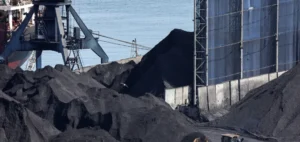In Australia, the reliance on coal for electricity generation reached its lowest point in the fourth quarter of 2024, falling below 50% of the national energy mix. This significant shift is attributed to a substantial increase in solar energy production, according to the Australian Energy Market Operator (AEMO). This change marks a turning point in the country’s energy sector, which remains one of the world’s largest exporters of coal.
Solar Energy Growth
Electricity production from rooftop solar panels increased by 18% between October and December 2024, while solar farms saw a 9% rise, reaching record levels. As a result, renewable energy provided nearly 46% of Australia’s electricity for this quarter. A notable peak occurred on November 6, 2024, when renewable energy reached 75.6% of the national energy mix.
Challenges in the Energy Transition
Australia has committed to achieving zero carbon emissions by 2050. However, despite significant progress in renewable energy share, the country remains heavily dependent on fossil fuels, especially for electricity generation. In parallel, the Australian government announced an additional funding of 1.2 billion euros for its “green bank,” aimed at accelerating the transition to renewable energy.
Impact on Energy Prices
The gradual closure of coal plants and the increasing share of renewable energy have also affected electricity prices. In 2024, wholesale electricity prices surged by 83%, primarily due to the decline in coal-based electricity production and transmission constraints. Australia’s Minister for Climate Change and Energy, Chris Bowen, emphasized the need for new transport infrastructure to keep prices low and ensure access to cheaper energy.
Global Context
Globally, coal continues to account for about a third of the total electricity production, according to the International Energy Agency (IEA). Coal demand reached a record level in 2022. However, to achieve carbon neutrality by 2050, the IEA suggests that coal-based electricity production without emission capture must cease by 2040.






















